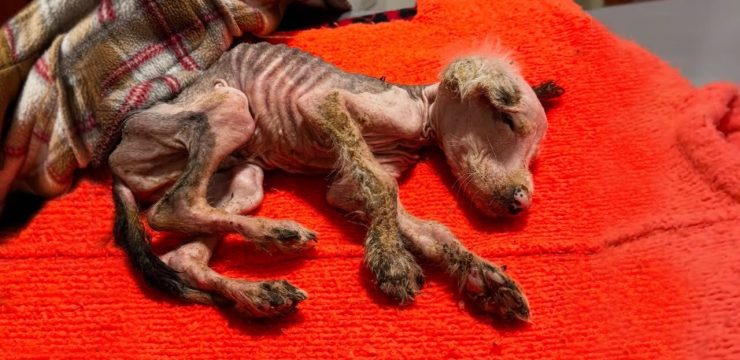In the early 1990s, Mara Wilson became a beloved face in Hollywood, winning the hearts of audiences everywhere with her endearing performances in family favorites like Mrs. Doubtfire and Miracle on 34th Street. She was the quintessential child star — charming, talented, and wise beyond her years. But as time went on, Wilson’s face slowly disappeared from the big screen, leaving many to wonder what had happened to the little girl who once lit up Hollywood. Now 37, Mara Wilson has opened up about her journey, explaining why her career came to a halt and how she found a new path for herself away from the camera.

Mara’s rise to fame started early. In 1993, at just five years old, she landed the role of Robin Williams’ youngest daughter in Mrs. Doubtfire, a film that became one of the most successful comedies in Hollywood history. Her performance was magnetic — audiences instantly fell in love with her quick wit and expressive face. Before her big break, Mara had appeared in television commercials, but Mrs. Doubtfire propelled her into the spotlight. Born in California, she came from a grounded family, and despite her early success, her parents were determined to keep her humble. “My parents were proud, but they kept me grounded,” she recalled. “If I ever said something like, ‘I’m the greatest!’ my mother would remind me, ‘You’re just an actor. You’re just a kid.’”
Just a year later, Mara landed another major role — this time as Susan Walker in Miracle on 34th Street, a remake of the 1947 holiday classic. It was a huge responsibility for someone so young, stepping into the shoes once filled by the legendary Natalie Wood. In a personal essay she later wrote for The Guardian, Mara described her audition experience, noting that she boldly declared to the production team that she didn’t believe in Santa Claus. Still, she admitted she did believe in the tooth fairy, even naming hers after her Mrs. Doubtfire co-star Sally Field — a charming reminder of her youthful innocence.
Her most iconic role came in 1996 when she played the title character in Matilda, a film based on Roald Dahl’s beloved book. Starring alongside Danny DeVito and Rhea Perlman, Mara brought the intelligent, telekinetic Matilda Wormwood to life with a blend of strength and vulnerability. But that same year, her personal world was shaken. Her mother, Suzie, passed away after battling breast cancer. The loss deeply affected her. “I didn’t really know who I was,” she admitted. “There was who I was before that, and who I was after that.” Suzie had been a constant presence, and Mara described the grief as overwhelming. While the world saw her as a famous young actress, Mara just wanted to be a regular kid. “Most of the time, I just wanted to be normal, especially after my mother died.”
Despite the fame, Mara found little joy in her success. Looking back, she admits that during the height of her popularity, she was also the most unhappy. The demands of child stardom, coupled with personal grief, took a toll. At age 11, she reluctantly starred in Thomas and the Magic Railroad, a fantasy adventure that would mark her final major role in a Hollywood film. The project didn’t sit well with her. “The characters were too young,” she said. “At 11, I had a visceral reaction to the script. Ugh, I thought. How cute.”
But Mara’s departure from the spotlight wasn’t entirely her choice. As she entered her teenage years, roles stopped coming. Puberty changed her appearance, and she no longer fit the mold that Hollywood had created for her. She was no longer the adorable little girl with the bright eyes and clever comebacks. “I was just another weird, nerdy, loud girl with bad teeth and bad hair, whose bra strap was always showing,” she wrote.
By age 13, no one complimented her appearance anymore — not in a positive way, at least. The silence was deafening. Her changing looks and growing up in the public eye had a lasting impact on her self-image. “I had this Hollywood idea that if you’re not cute anymore, if you’re not beautiful, then you are worthless,” she said. She believed her fading career was directly tied to her changing appearance. “Even though I was sort of burned out on it, and Hollywood was burned out on me, it still doesn’t feel good to be rejected.”
Today, Mara Wilson has found a new way to share her voice — through writing. In 2016, she published her first book, Where Am I Now? True Stories of Girlhood and Accidental Fame, a collection of personal essays that detail her experiences as a young actress and her journey toward self-discovery. The book dives into everything from the awkwardness of adolescence to learning about adult topics while working on set, and the emotional toll of being deemed no longer “cute” by Hollywood’s standards.
She later wrote Good Girls Don’t, another memoir that explores the pressure of meeting expectations and finding identity beyond the screen. Writing gave her the freedom that acting never could — a chance to reclaim her narrative and express her true self. “Being cute just made me miserable,” she confessed. “I had always thought it would be me giving up acting, not the other way around.”
Despite her struggles, Mara Wilson has become an example of resilience. Her story is a powerful reminder that behind the curtain of fame lies a complex human experience. She didn’t fall from grace — she simply outgrew a world that couldn’t see beyond her childhood charm. Now, as a writer and advocate for mental health and self-acceptance, Mara Wilson is finding her voice in a different way — and she’s inspiring others to do the same.
What are your thoughts on Mara Wilson’s journey? We’d love to hear from you. Share this story with others to spread her powerful message of growth, resilience, and finding value beyond appearances.





